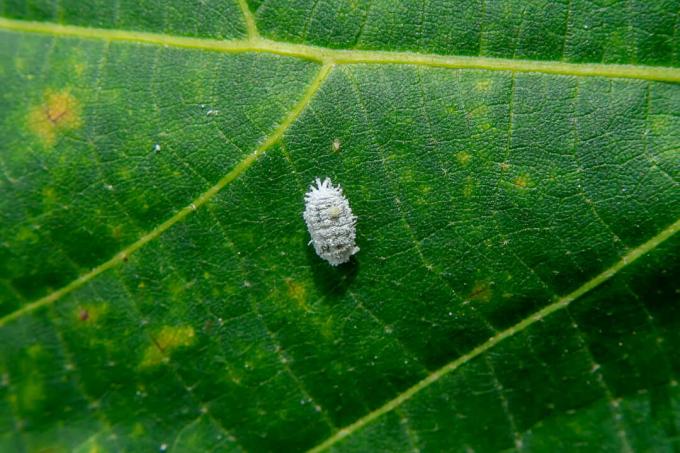The small white lice are particularly common on hydrangeas. We show how to control mealybugs on hydrangeas and avoid an infestation.

Mealybug (Pseudococcidae) are also often called mealybugs and particularly like to sit on our hydrangeas. However, many other houseplants, ornamental plants and even vegetable crops are repeatedly infested with these hairy white lice.
We look forward to seeing the colorful flowers of the Hydrangeas (Hydrangea) shine in our garden. However, our joy is soon clouded when mealybugs attack our hydrangeas. In the following you will learn the most important things about hydrangeas and an infestation with mealybugs.
Recognizing mealybugs on hydrangeas: symptoms and damage
Mealybugs are very easy to spot because they are surrounded by a white web that resembles tiny white hairs or white fluff. The mealybugs have an oval body shape and can be up to seven millimeters in size. The white fluff is made of wax that protects the mealybugs. Some mealybugs also look like they've been sprinkled with powdered sugar.
The mealybugs attach themselves to the plants and then ingest the sap, whereby they can even transmit harmful viruses to the plants. They also excrete the sticky honeydew on which fungi often settle. This is why it is not uncommon to discover sticky spots on the plants, which are often discolored dark or black by the fungi. As the lice suckle the hydrangeas, the infected leaves turn yellow and eventually fall off. If the infestation with mealybugs is very strong, the hydrangeas can even die.

Preventing mealybugs on hydrangeas
A mealybug infestation often starts suddenly when new plants have been brought into the house. So if you are getting a new hydrangea for your living space, for example, check these plants for pest infestation immediately. If you see any signs of mealybugs - such as the white dusty lice or sticky honeydew - avoid moving the plant near other houseplants. It is best to examine the houseplants carefully when you buy them so as not to bring pests into the house. Indoors, poorly ventilated rooms and long periods of heat are often very conducive to an infestation with mealybugs. You should therefore ensure that the rooms are well ventilated and that the temperature in the rooms is not too high.
Fighting mealybugs on hydrangeas: how to get rid of them
Natural opponents of the mealybugs are Lacewing (Chrysopidae), Ladybug (Coccinellidae) and Parasitic wasps (Ichneumonidae). You can either acquire these from farms or you can turn your garden into a beneficial insect-friendly place. To do this, you should create dry stone walls, beneficial insect hotels or small biotopes in order to offer the little helpers a beautiful living space. Here is more information on how to customize your Make the garden beneficial to beneficial insects can.
Apart from that, you can also use ready-made preparations such as our Plantura Buy organic pest-free neem. With its 100% herbal active ingredient, it works reliably against mealybugs and Co.
Fighting mealybugs is often difficult because they are well protected by their wax layer on the body, which makes fighting them more difficult. One possibility is to destroy this wax layer with a mixture of alcohol and water and use it to fight the mealybugs. In the event of a point-like infestation, you can cut back the infested areas of your hydrangeas and thus prevent the mealybugs from spreading. If hydrangeas in pots are infested with mealybugs, you should separate these plants from other ornamental plants to prevent them from spreading. More about Control of mealybugs You can find out here in our article with information about the small pests.



